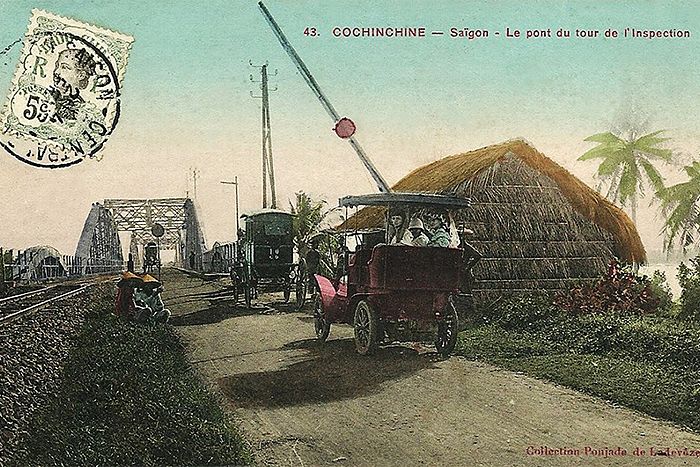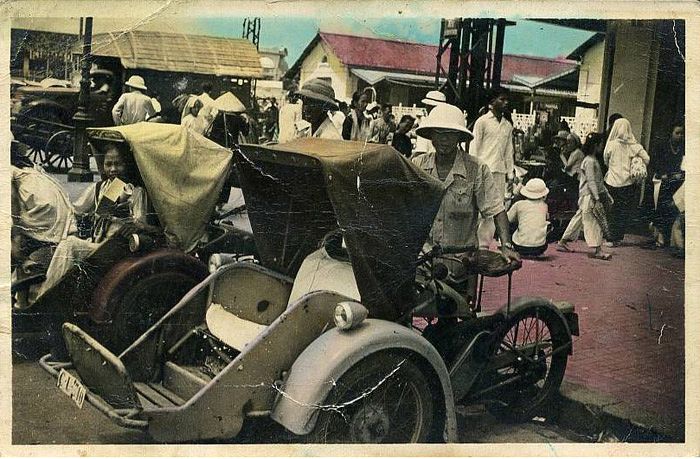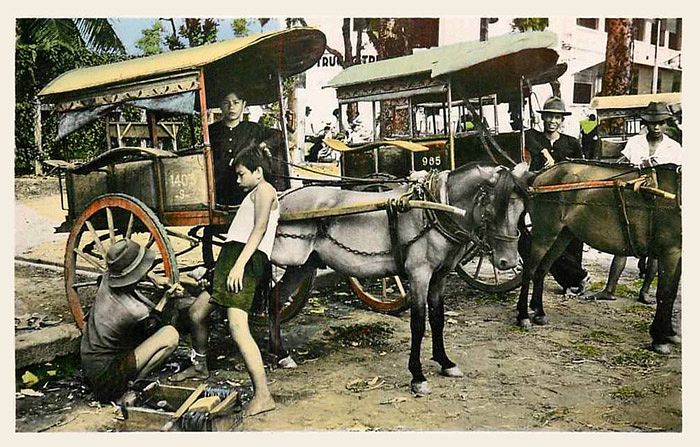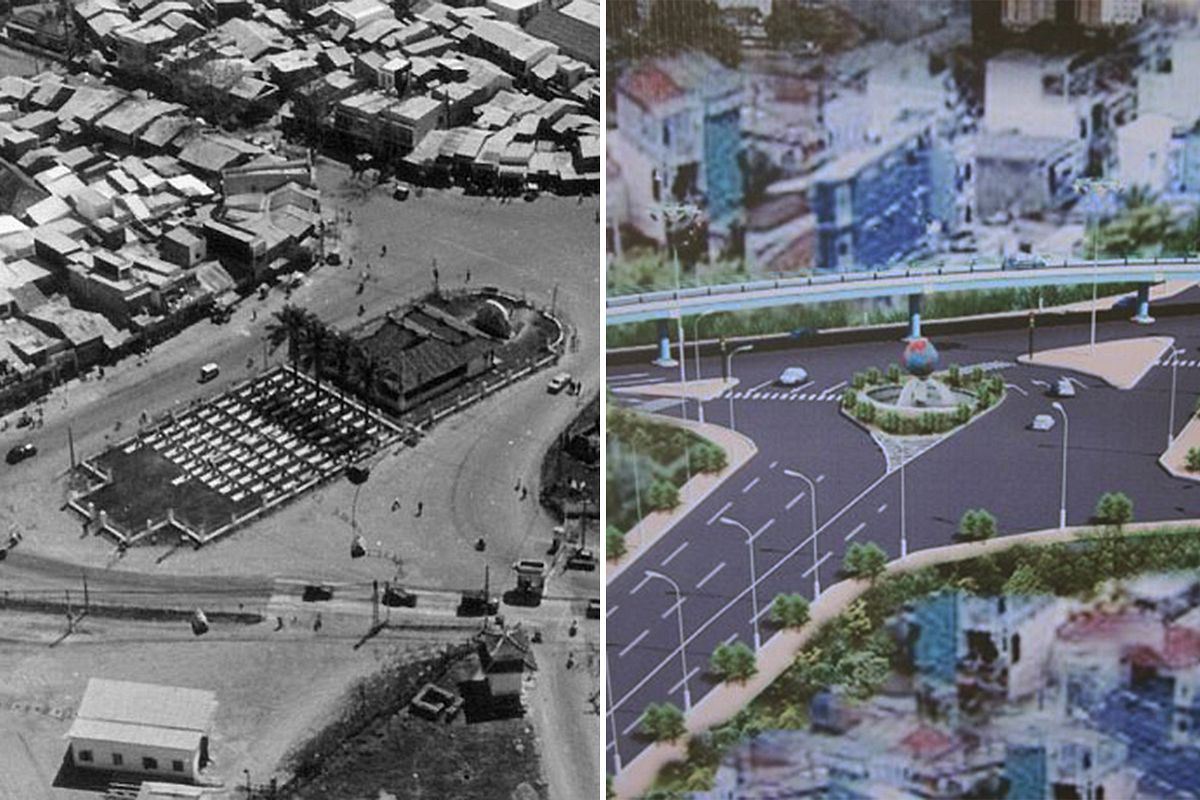An essential feature of life in early colonial Saigon, the Tour de l'Inspection was not so much a sunset promenade as an event designed to showcase wealth and power.
Click here for Part 1 of this series on Saigon’s Tour de l’Inspection.
For many early colonial settlers, the Tour de l'Inspection was much more about flaunting wealth and power than about getting exercise or taking the air.
In 1896, Paul Troubat (L'Ile de Khong. Lettres laotiennes d'un engagé volontaire) described the Tour de l'Inspection as simply an excuse for the wealthy to impress others with their fine horses and carriages and for their spouses to show off their latest outfits, newly-delivered from Paris. “Everyone feels obliged to maintain a stiff, stilted attitude,” he remarked cynically. “Everyone is posing, but many of these people are trying to forget their origins, their more or less corrupt past, through arrogance and pride. Saigon society spends its time in jealousy and disparagement.... it is a very nice town from the physical point of view, but the character of the population can be ugly...”
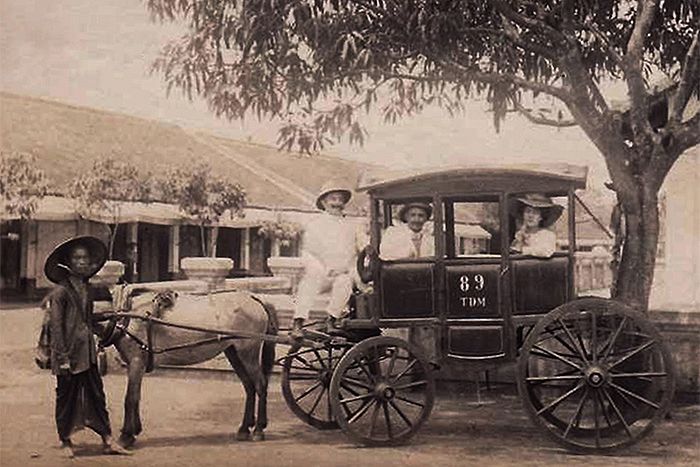
Europeans being conveyed in a Malabar.
In 1901, Jules Gervais-Courtellemont (Empire colonial de la France. L'Indo-Chine: Cochinchine, Cambodge, Laos, Annam, Tonkin) also criticised the laziness of colonial settlers who had “not yet learned to appreciate the charms of tennis and other sports so dear to English colonists,” preferring “to live the all too captivating life of coffee drinking, siestas and card games.” He pointed out that most colons’ idea of exercise was to do the traditional Tour de l'Inspection while “lounging lazily on cushions in their Victoria carriages, dressed in the latest fashionable Paris outfits.”
With the arrival of the motor vehicle and the steady urbanisation of Saigon’s northern and western suburbs in the early 20th century, members of Saigon’s colonial high society gradually abandoned the Tour de l'Inspection as a vehicle for impressing their peers.
In his 1932 book Christiane de Saïgon, B Grasset wrote that, while the older generation of colonial settlers might regret passing of the traditional Tour d'Inspection with its horse-drawn carriages and malabars, the colonial social scene in Saigon was now firmly focused on rue Catinat [Đồng Khởi street], where the rich and powerful “could show off their motor cars and fashionable costumes as many as 20 times between one end of the street and the other… before holding court at the trendy Continental Hotel Terrace, the heart of the city and of Indochinese life.” He continued: “Only here does one now gather to gossip and do business, to talk of love and money, and to learn the news from Europe and Asia from passengers making a three-day stopover on the major courier ships.”
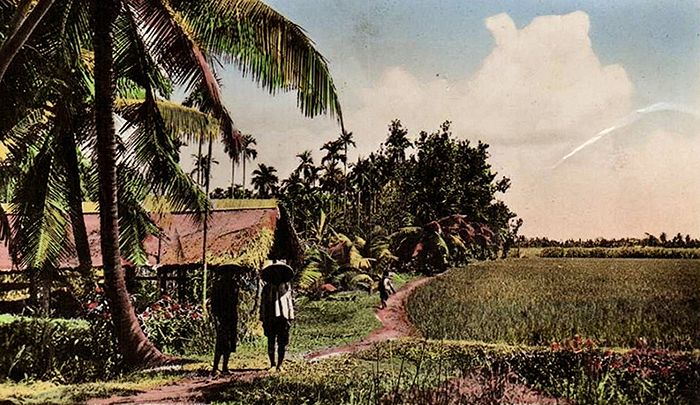
During the early colonial period, the area north of the Thị Nghè creek was still open countryside.
Yet despite this shift, the Tour de l’Inspection did not disappear immediately. As horse-drawn carriages gave way to the first mass-produced motor vehicles, the “grand promenade” began to appear in Madrolle and other guidebooks as a tourist attraction.
The last known reference to the Tour de l’Inspection appears in the 1933 Guide pratique. Saïgon, which describes it as follows:
“The Tour de l’Inspection is a circular route which borders territories of Saigon, Gia-Dinh and Cholon (20 km approximately), which leaves the city by the Phu-My Bridge on the arroyo d’Avalanche, or by the Dakao Bridge. It crosses through Gia-Dinh and, via a beautiful shaded road lined with quaint buildings, arrives at the tomb of Le Van Duyet, famous general of King Gia Long, before continuing to the tomb of the Bishop of Adran, which is very interesting for the visitor. Close by is the aerodrome of Tan-Son-Nhut and the buildings of the Service des Haras (Government Stud Farm). A little further on, it passes the battlefield of Chi-Hoa, the Plain of Tombs and the TSF (Telephonie sans fil) station at Phu-Tho. Finally, it reaches Cholon, an industrial and commercial city crowded with Chinese, which is very picturesque at night, and interesting to visit in detail. The tour returns to Saigon, either by the boulevard Galliéni [modern Trần Hưng Đao street], by the “Low Road” which borders the Arroyo Chinois, or alternatively via boulevard Frédéric-Drouhet [now Hùng Vương street], which is the Cholon extension of rue Chasseloup-Laubat[now Nguyễn Thị Minh Khai street].”

Saigon - Promenade du Tour de l'Inspection.
While some of the colonial-era attractions no longer exist, parts of the famous Tour de l’Inspection still feature in several Hồ Chí Minh City tourist itineraries today.
Tim Doling is the author of the walking tours book Exploring Hồ Chí Minh City (Nhà Xuất Bản Thế Giới, Hà Nội, 2014) and also conducts 4-hour Heritage Tours of Historic Saigon and Cholon. For more information about Saigon history and Tim's tours visit his website, www.historicvietnam.com.

